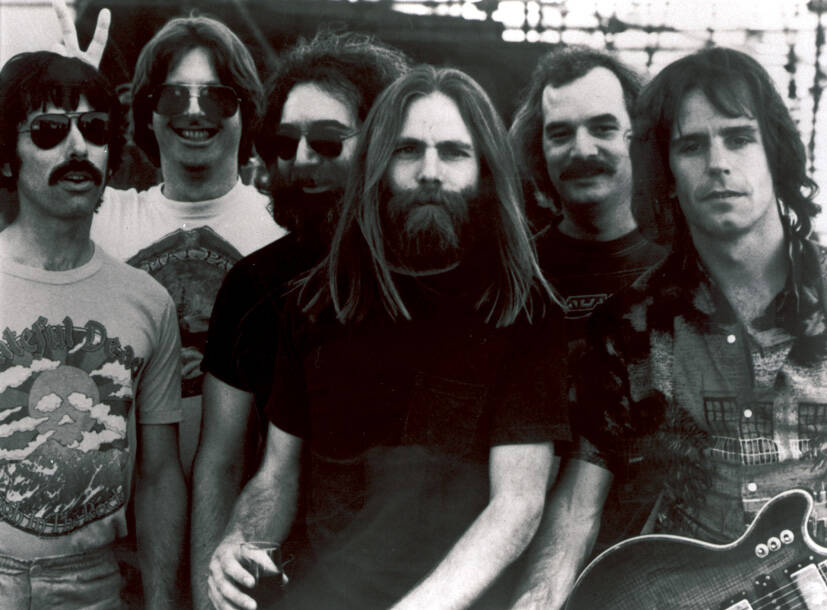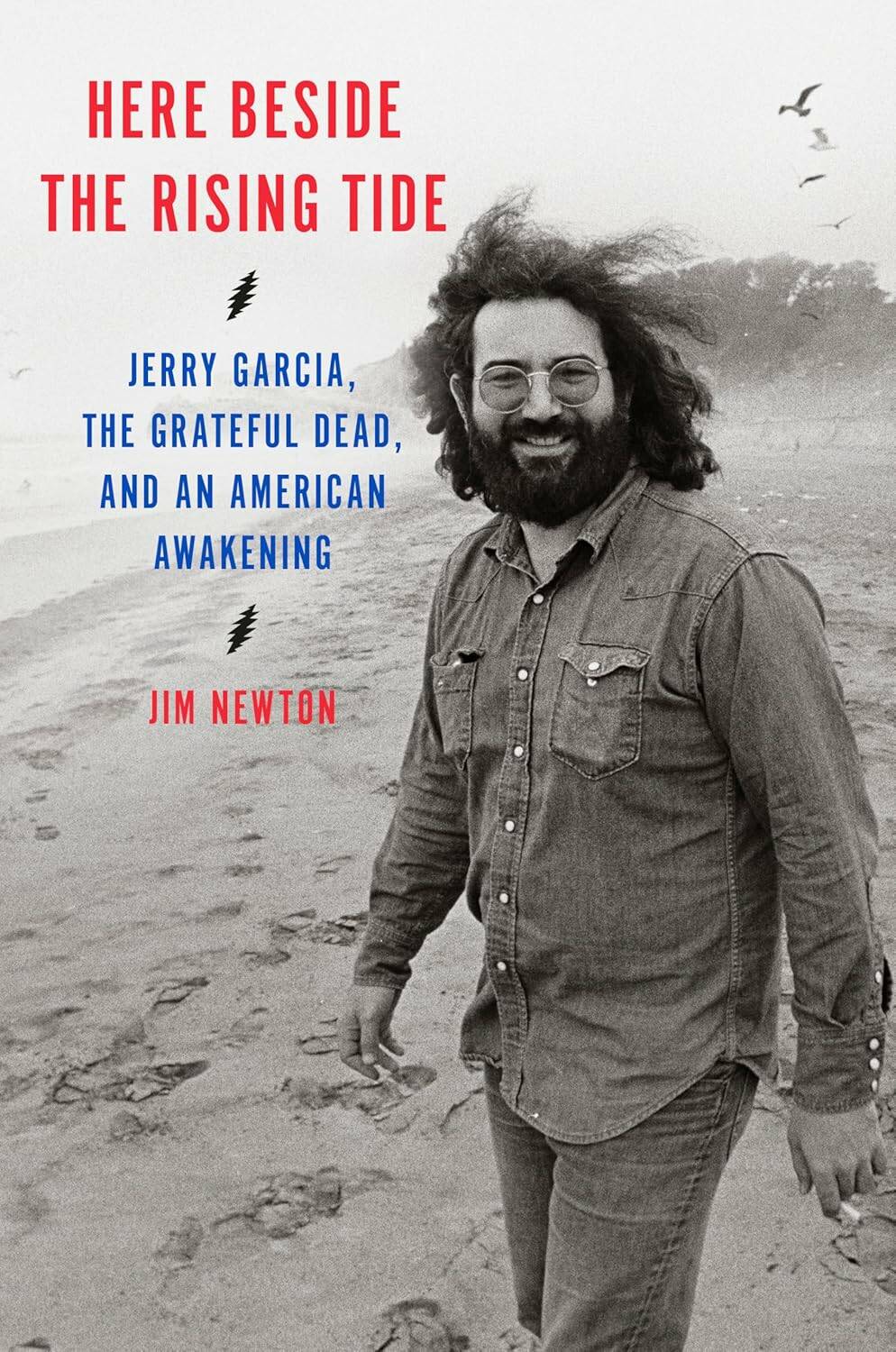A long, strange trip
Garcia biography chronicles highs and lows of life in the Grateful Dead
Advertisement
Read this article for free:
or
Already have an account? Log in here »
To continue reading, please subscribe:
Monthly Digital Subscription
$1 per week for 24 weeks*
- Enjoy unlimited reading on winnipegfreepress.com
- Read the E-Edition, our digital replica newspaper
- Access News Break, our award-winning app
- Play interactive puzzles
*Billed as $4.00 plus GST every four weeks. After 24 weeks, price increases to the regular rate of $19.00 plus GST every four weeks. Offer available to new and qualified returning subscribers only. Cancel any time.
Monthly Digital Subscription
$4.75/week*
- Enjoy unlimited reading on winnipegfreepress.com
- Read the E-Edition, our digital replica newspaper
- Access News Break, our award-winning app
- Play interactive puzzles
*Billed as $19 plus GST every four weeks. Cancel any time.
To continue reading, please subscribe:
Add Winnipeg Free Press access to your Brandon Sun subscription for only
$1 for the first 4 weeks*
*$1 will be added to your next bill. After your 4 weeks access is complete your rate will increase by $0.00 a X percent off the regular rate.
Read unlimited articles for free today:
or
Already have an account? Log in here »
You don’t have to be a Deadhead to appreciate, or perhaps revel in, biographer Jim Newton’s extensive account of the Grateful Dead and Jerry Garcia, its lead guitarist, a vocalist, songwriter.
Newton, a former reporter, columnist and editor at the Los Angeles Times and author of several political biographies, captures a band at a remarkable time and place. Rock music was changing along with the political and social climate to herald what became known as the counterculture — young people seeking to replace the staid, repressive America of their parents with a more accepting, humane society (which, for many of its proponents, included a drug culture).
The book, naturally, focuses heavily on the first decade of the band’s 30-year run that ended in in 1995 with Garcia’s death, melding the band’s story with the social movements, politics, literature and journalism of that time.

Associated Press files
The Grateful Dead (here, from left, Mickey Hart, Phil Lesh, Jerry Garcia, Brent Mydland, Bill Kreutzmann and Bob Weir) garnered a devoted legion of fans commonly known as Deadheads.
It’s not a hagiography of Garcia; it explores his incredible talent, but also destructive behaviour with drugs, family life and eventual health problems that caused his death.
Nor is the book simply about Garcia. The other Dead members — Bobby Weir (guitar and vocals), Phil Lesh (bass), Ron “Pigpen” McKernan (keyboards and vocals) and Bill Kreutzmann and Mickey Hart (drummers) — are all given their due as part of the phenomenon that was the band. But, as Newton writes: “Garcia was just one part of that band, but he was the essential ingredient, and its essence was connection.’’
Newton writes from his own research and plumbs existing books for an entertaining, informative look at a turbulent, exciting time in politics and culture.
He also has filled the book with interesting tidbits about the band and its members as well as the broader commentary on their role in reshaping American music and social attitudes. For example, the sniff at the beginning of the song Casey Jones, commonly accepted as a reference to cocaine use, was really just Garcia clearing his sinuses preparing to sing.
Or, the letter gonzo journalist Hunter S. Thompson wrote to an editor of Rolling Stone magazine in 1970 stating “If the Grateful Dead come to town, I’d beat my way in with a f—ing tire iron.”
Or, how one of the greatest musical collaborations was born between Garcia and Robert Hunter, a great lyricist and musician in his own right. In early 1961, each one was living in their own beater car and parking in vacant lots in Palo Alto, Calif., and they bonded over tins of crushed pineapple Hunter had and plastic forks Garcia provided. As Newton writes: “They ate pineapple, cruised coffee houses, and played guitar.”

Here Beside the Rising Tide
Or that Jerome John Garcia, born Aug. 1, 1942 in San Francisco, was named for composer Jerome Kern.
A Dead connection to Winnipeg occurred in July 1970, when the band performed as part of the Festival Express roadshow travelling from Toronto west to B.C. by train, in a lineup that included the likes of Janis Joplin, The Band, Buddy Guy, Mountain as well as Delany and Bonnie and Friends.
The 60th anniversary of the Grateful Dead was celebrated over three days at the beginning of August of this year at concerts and festivities in San Francisco, marking the band and the city that were ground zero for what became known as the counterculture movement that rocked the music and social world. Concerts by Dead & Company, which has kept the band’s legacy alive, included only two original members, Weir and Hart.
The book’s title, for the uninitiated, is a line from the chorus of the song Uncle John’s Band, a Garcia/Hunter collaboration on the Workingman’s Dead album. (If you’re not sure what an album is, ask your grandparents.)
Truckin’, besides being a great song, period, contained what would become the most recognized couplet in the Dead’s songbook: “Lately it occurs to me/ What a long, strange trip it’s been.”

Kristy McDonald / Associated Press files
Garcia, seen here in 1992, died in 1995.
Indeed.
Chris Smith is a Winnipeg writer.

